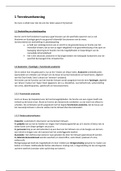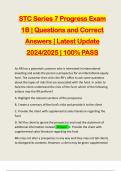Summary
Anxiety and Related disorder (GGZ2024): A complete and compact summary of the entire substance.
- Course
- Institution
- Book
A very brief summary of all the material; lectures, tasks, practicals, project works and literature. This summary contains all the highlights for the exam of course 5: Anxiety and Related disorders. It is a clear summary of the fabric's red line. Very handy for stomping! Good luck with the exam:)
[Show more]













